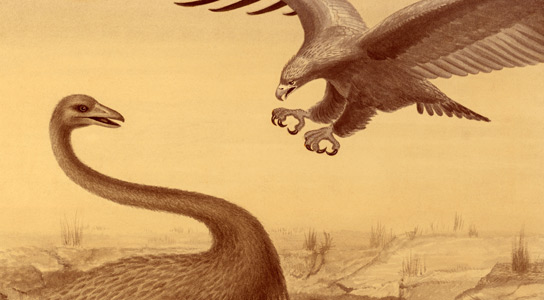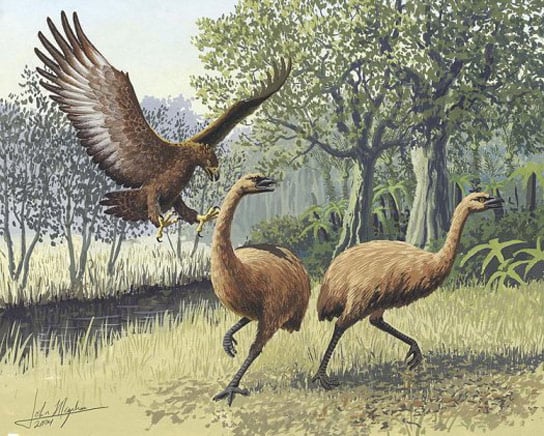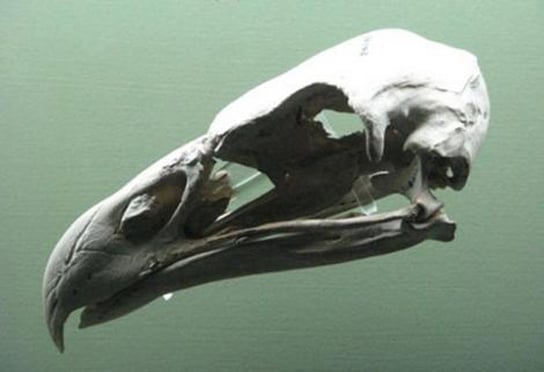
The strongest and biggest bird of prey that ever existed was the Haast’s Eagle (Harpagornis moorei) of New Zealand, and it became extinct around the 1400s soon after the Maori settled the South Island of New Zealand.
H. moorei was powerful enough to attack and prey on giant flightless birds, the moa, weighing 10 to 15 times their own body weight. Comparatively to its body size, the Haast’s Eagle’s wingspan was short, at about 9 feet (2.7 meters). It’s believed that the raptor would swoop down at speeds of nearly 50 mph (80 kph) to attack the moa. It used its talons to kill them on the ground and didn’t carry off its prey.

It’s believed that the Haast’s Eagle and moa evolved due to island gigantism, a phenomenon in which animals isolated from other, more diverse populations, end up much larger than they would be on the mainland. When the Maori first arrived in New Zealand, there were no land animals. Birds and reptiles evolved to fill up these empty ecological niches that would have been typically filled up by larger mammals.

Evolutionarily speaking, Haast’s Eagle took the place of the apex predator that hunted grazers, a space taken up by the moa species. When the Maori hunted the moa to extinction in the 1400s, barely a century after their arrival, there was no prey large enough to sustain the Haast’s Eagles, so they became extinct quickly.
No evidence has been found that Haast’s Eagle preyed on humans, but researchers believe it was big and strong enough to do so.
4 Comments
I also think, that if the haasts eagle was very well able to attack and kill an adult giant moa, it could also attack and kill and adult human being or even a cow. But even though it might sound exaggerating a little bit to kill an adult man or cow, it perfectly isn’t, especially when you consider that these giant predatory birds were able to kill birds that weighed up to 250 kilograms and stood up to 12 feet tall.
i wounder if the moa lived in open plains and i also wounder if the Haast’s eagle di prey on humans?
The statements of eagles capable of attacking humans is silent on the notion that the humans could fight back and kill the eagles, and destroy the eagle nests as well.
About this sentence: “When the Maori first arrived in New Zealand, there were no land animals.” Clearly, the writer intended to say, “there were no land •mammals•.” New Zealand had lots of land animals before humans arrived; they were just almost all non-mammals: birds, reptiles, amphibians, and invertebrates.
But it’s not quite correct to say there were no land mammals. Prior to human settlement, three species of bat were native to New Zealand. And, in the absence of larger mammalian predators, the New Zealand bats developed highly terrestrial foraging behaviors, although they did not completely lose the ability to fly.